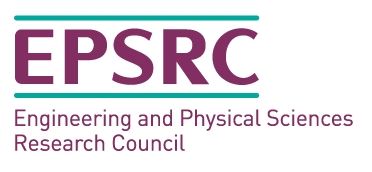
Funded by

Research groups
Websites
-
Matthew Cherukara
Profile
Collaborators
Cardiff University Brain Research Imaging Centre (CUBRIC), Cardiff University
Centre for Functional MRI, University of California San Diego
Hotchkiss Brain Institute, University of Calgary
Nicholas Blockley
University Research Lecturer
- EPSRC Early Career Fellow
- Head of FMRI Physiology
Research Summary
The focus of my research is the development of new techniques to non-invasively image the function of the brain using MRI (Magnetic Resonance Imaging). I specialise in the measurement of aspects of brain physiology that are typically difficult to acquire using any other method. For example, my current EPSRC fellowship was awarded to develop new technologies for measuring oxygen metabolism in the human brain. Conventionally such measurements are performed using PET (Positron Emission Tomography) resulting in exposure to ionising radiation and long acquisition times. Even more importantly the equipment to perform these PET measurements is poorly available in the UK. In contrast 3T MRI is widely available in the NHS. Currently my team are collaborating with clinical colleagues to demonstrate the potential of these techniques in acute stroke, traumatic brain injury and brain tumours.
Development of these new techniques is dependent on gaining a better understanding of the interaction between brain physiology and the MRI signal. This is achieved by developing sophisticated simulation tools to better understand sources of systematic error. Isolating specific aspects of physiology is achieved by sensitising the MRI signal using custom pulse sequences and tightly controlled respiratory stimuli. In the case of the former, I have developed a new asymmetric spin echo (ASE) pulse sequence to measure the reversible transverse relaxation rate R2′ (GESEPI-ASE), which underpins our technique for measuring resting oxygen metabolism (streamlined-qBOLD). In the case of the latter, I have developed novel shaped respiratory stimuli to produce a rapid protocol for measuring vascular reactivity and provide new information about regional variations in blood arrival time (rapid cerebrovascular reactivity mapping).
Recent publications
-
Prospects for investigating brain oxygenation in acute stroke: Experience with a non-contrast quantitative BOLD based approach.
Journal article
Stone AJ. et al, (2019), Hum Brain Mapp
-
Gas-free calibrated fMRI with a correction for vessel-size sensitivity.
Journal article
Berman AJL. et al, (2018), Neuroimage, 169, 176 - 188
-
Multiparametric measurement of cerebral physiology using calibrated fMRI.
Journal article
Bright MG. et al, (2017), Neuroimage
-
Rapid cerebrovascular reactivity mapping: Enabling vascular reactivity information to be routinely acquired.
Journal article
Blockley NP. et al, (2017), Neuroimage, 159, 214 - 223
-
Clinical mapping of cerebrovascular reactivity using MRI: a framework for reaching consensus
Conference paper
Bright MG. et al, (2017), JOURNAL OF CEREBRAL BLOOD FLOW AND METABOLISM, 37, 290 - 291
Related Links
Imaging Cerebral Physiology Network
Network of scientists interested in imaging brain physiology using MRI
Focussed on the development of new MRI methodologies
A subsection of the FMRIB Physics Group specialising in techniques to quantify multiple aspects of brain physiology
Acute Vascular Imaging Centre (AVIC)
Research into new methods of imaging Stroke through the Acute MRI In Cerebral Ischaemia (AMICI) project

